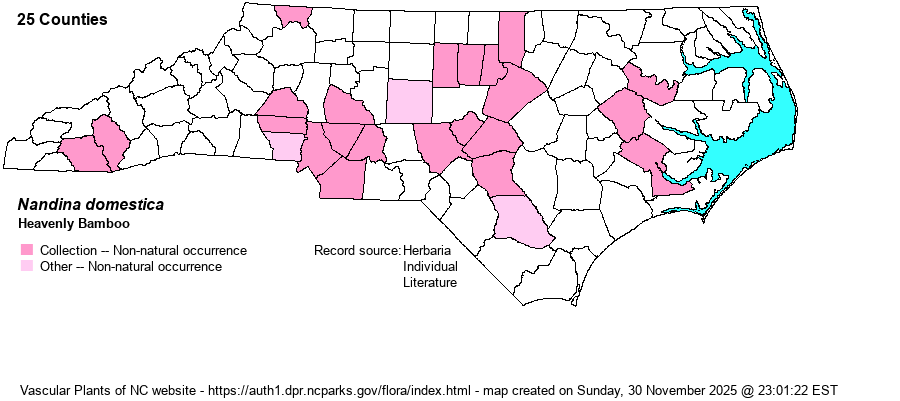| Author | Thunberg | |
| Distribution | Mostly the Piedmont and Sandhills; scattered in the Mountains; a few sites in the middle to outer Coastal Plain. Expected to occur in many more counties.
Native of India, China, Japan; in N.A. recorded from NC to FL and TX. | |
| Abundance | Uncommon in Piedmont and Coastal Plain, rare in the Mountains. Appears to be increasing rapidly in NC within the past couple of decades. The attractive red berries are reportedly poisonous to some bird species, such as Cedar Waxwings, and there is growing concern to eradicate this invasive plant. | |
| Habitat | Moist to seasonally wet woods, mesic mixed woods, disturbed woods and woodlots, roadside thickets, along trails, local escape on campuses. Frequently cultivated for its bright autumn foliage and berries. |
| Phenology | Flowering May-June; fruiting September-November. | |
| Identification | These evergreen shrubs grow 3-6 feet tall, with leaves beyond mid-stem. The leaves are 2-3 times pinnately compound, the leaflets lance-shape or narrowly ovate. Leaves turn red or pinkish red in autumn. The inflorescence is a terminal panicle that may produce hundreds of small flowers. Fruits are bright red berries. | |
| Taxonomic Comments | Some taxonomists treat it in its own family Nandinaceae.
| |
| Other Common Name(s) | Nandina | |
| State Rank | SE | |
| Global Rank | GNR | |
| State Status | | |
| US Status | | |
| USACE-agcp | | |
| USACE-emp | | |

